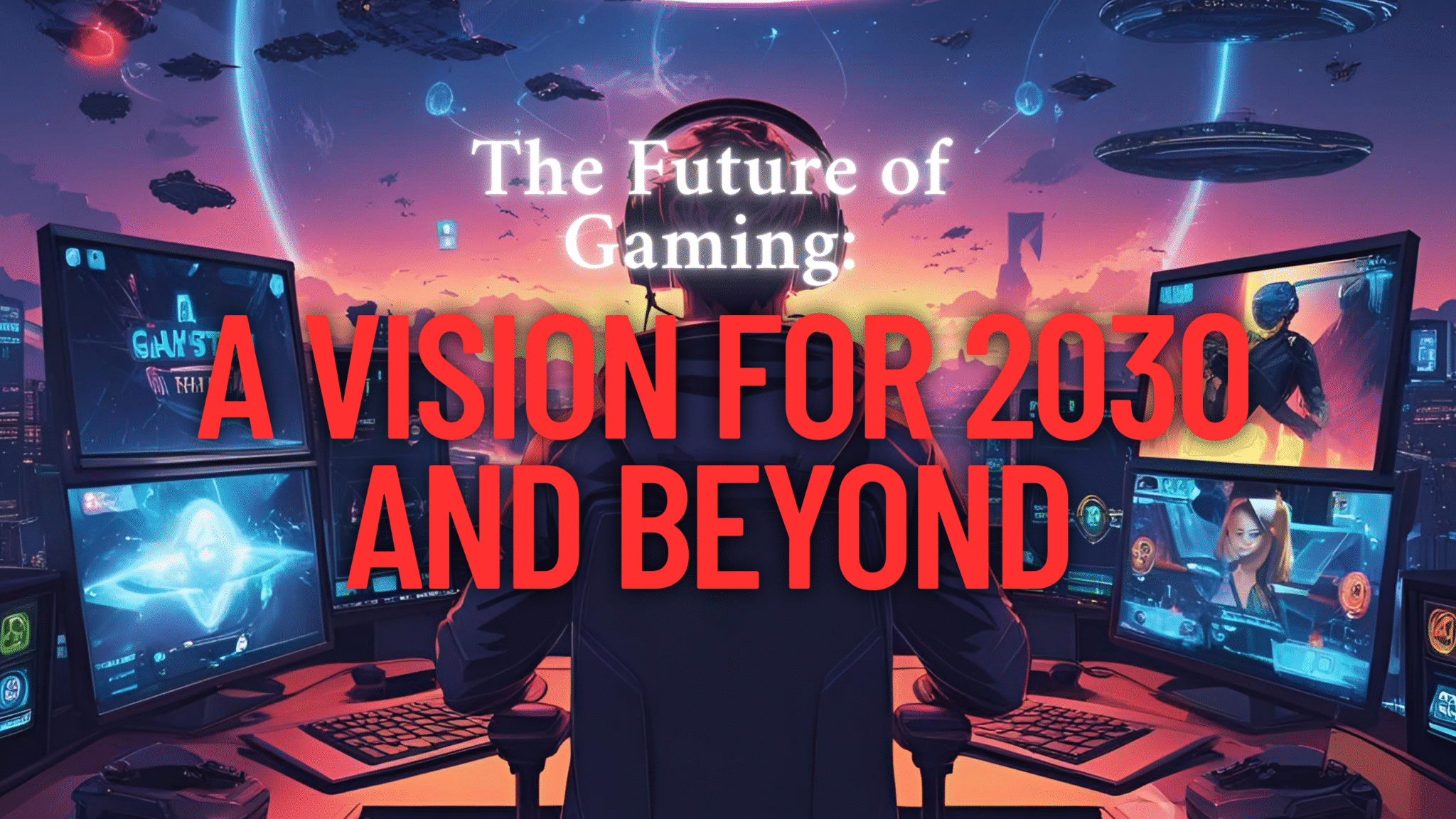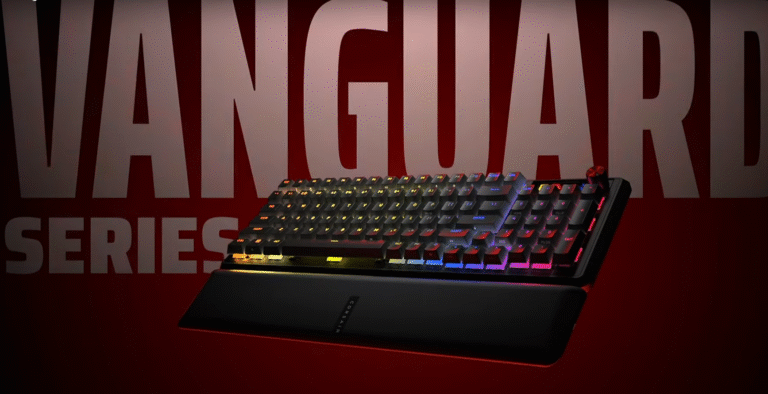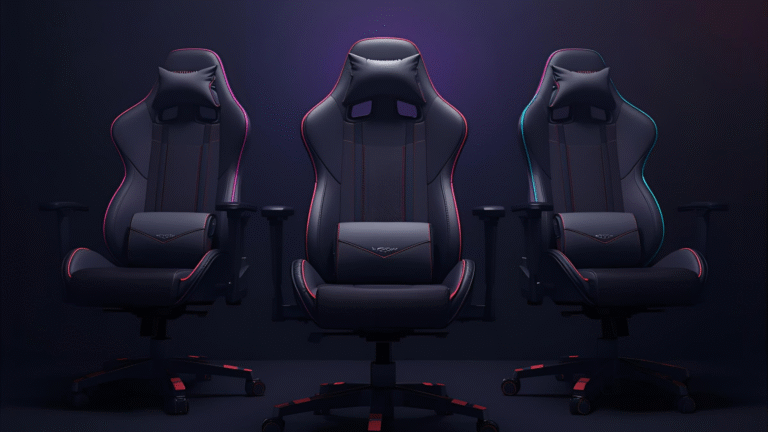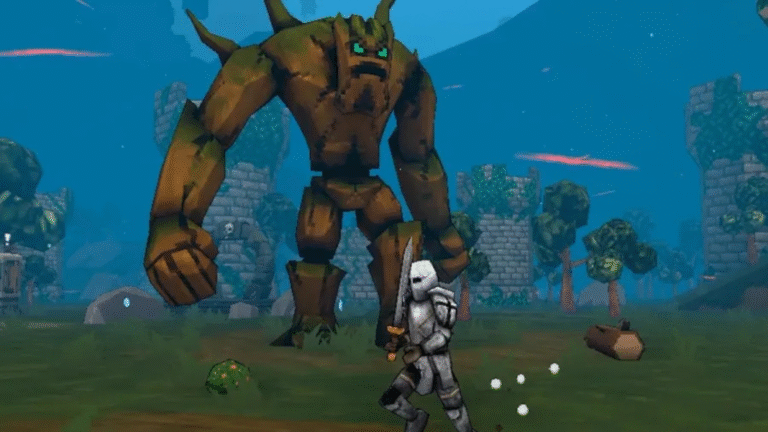
|
Getting your Trinity Audio player ready...
|
In the near future, humanity will face extinction due to a disease that spreads across the Earth. You are its last hope. The cure lies 65 million years in the past, where you’ll have to survive among unfamiliar plant life and deadly predators. Through an ultra-immersive virtual reality (VR) experience, you will embark on a journey to retrieve the cure. This isn’t science fiction—it’s the future of video games. By 2030, hyper-realistic experiences like this will be part of our daily lives, becoming as normal as scrolling through social media is today. VR, which now feels outdated, will be revolutionary and fully integrated into how we play, learn, and live.
If you want to learn more about VR in the gaming world, feel free to search or suggest topics on our website in the “Support & Suggestions” section. You can propose themes, ask questions, or suggest what you’d like us to explain next.
🎮 Level Up Your Game with Our Patreon! 🎮
- 📚 Early Access to Full Guides: Get personalized guides for your favorite games before anyone else.
- 🔍 Exclusive Analyses: Deep dives into top teams and game strategies just for you.
- 🏆 Join Tournaments: Compete in tournaments with cash prizes and exclusive in-game items.
- 💥 Be the First: Access the latest news and updates in the gaming world.
👉 Don’t miss out—join our Patreon today and become the ultimate gamer!

Gaming in 2030: Boundless, Immersive, Ubiquitous
By 2030, gaming won’t be about sitting in front of a screen. Instead, it will blend with our physical world through spatial computing, augmented reality (AR), and XR innovations that allow players to move, explore, and engage with their surroundings. A great early example is Pokémon GO, which brought gaming into our real-world environments—fun, immersive, and unforgettable.
The line between digital and physical reality will become nearly invisible. Players will be able to transform real-world spaces—cities, classrooms, even workplaces—into living game worlds.
Key Drivers of Change
- Natural User Interfaces (NUIs): Replacing traditional buttons and screens with gestures, voice commands, and eye-tracking.
- Network Compute Fabric (NCF): A dynamic system that fuses connectivity and computing, allowing real-time interaction and adaptability.
- Cloud Gaming: Eliminating downloads by giving players instant access to games across multiple devices, anywhere and anytime.
Gaming’s Expanding Role in Society
Education: History Comes Alive
AR in gaming will revolutionize education. Imagine students virtually visiting the Roman Colosseum and experiencing life as it was nearly 2,000 years ago. Through spatial mapping and immersive storytelling, history will become an experience instead of a dull lecture—perfect for a generation easily distracted by static learning formats.
Industry: Training Without Consequences
Gamified training will redefine how we build and learn. For example, a car factory worker could learn the inner mechanics of a vehicle through a simulation game, where mistakes carry no real-world consequences—creating safer, better-prepared workers.
The Gamer in All of Us
Health and Rehabilitation
Nintendo’s Brain Training helped older users maintain cognitive sharpness. The Wii was also a breakthrough in physical rehabilitation, aiding patients in regaining motor skills after surgeries and accidents.
Disaster Relief Through Minecraft
In collaboration with Ericsson and the UN, Minecraft has been used to design real-world buildings in disaster-affected areas, speeding up reconstruction efforts. This showcases how games are already contributing to society in impactful ways.
Sustainability Through Competition
Apps like Ecologi and Ecosia use game mechanics—ranks, achievements, leaderboards—to encourage eco-friendly behavior like tree planting and reducing carbon footprints.
Overcoming the Challenges
Technological Limitations
For this vision to become reality by the 2030s, there’s still a long road ahead. In our article Are Video Games Still a Thing?, we explore key advancements and estimate how long until they meet our expectations. VR, for instance, is still far from what it can be.
Companies like Unity—leaders in real-time 3D (RT3D) content development—are working to make XR content accessible to everyone. They envision a world where even your grandma or toddler can use gaming tools in daily life.
Device Innovation
VR and AR hardware need to become lighter, more user-friendly, and offer longer battery life. These are critical for enabling the next wave of technological revolution.
Breaking Social Stereotypes
Gaming must move past outdated stigmas. It’s no longer antisocial or isolating. Today, gaming builds communities. Players join forums, attend real-life meetups, and support each other. The stereotype of a gamer living in their parents’ basement is long gone. Now, people of all ages game—for relaxation, fun, and social connection. Streaming and content creation have expanded communities, helping gamers connect, learn, and grow together. We’re no longer separate groups—we’re one big global gaming community, eager to see what’s next.
Gaming + Entertainment: The Rise of Interactive Spectatorship
Platforms like Tension are transforming how we view and engage with content. Fans can now watch live hockey games from custom angles, analyze plays in real time, and interact as if they were on the field. Esports and gamified streaming are turning spectatorship into something active and participatory—not just passive viewing.
The Role of Ericsson and Network Evolution
Ericsson is at the heart of this transformation. Through innovations in infrastructure and NFC development, they are enabling:
- Real-time interaction
- Scalable bandwidth
- Flexible network capabilities
- All while maintaining data privacy and integrity
Their vision of flexible connectivity makes gaming not just entertainment, but a powerful tool for creativity, education, and real-life innovation.
A Borderless Gaming Future
Imagine a child exploring a Cretaceous jungle through ultra-realistic XR while their parents track eco-habits via a gamified sustainability dashboard. One student studies at a café using AR overlays, while another plans vacations using hand gestures.
This is seamless integration of gaming tech into daily life—a connected world without barriers, powered by gaming.
Conclusion: Press Start on the Future
As we move closer to 2030, gaming will no longer be just a pastime. It will become central to how we work, learn, explore, and stay healthy. With advancements across all these areas, it’s only a matter of time before gaming is at the heart of our daily lives.
Even if full immersion doesn’t arrive exactly in 2030, we’ll soon see the first basic versions of these technologies—already more advanced than today’s systems. With time, complete versions without bugs or major issues will arrive, and gaming will become a dominant part of modern life.





